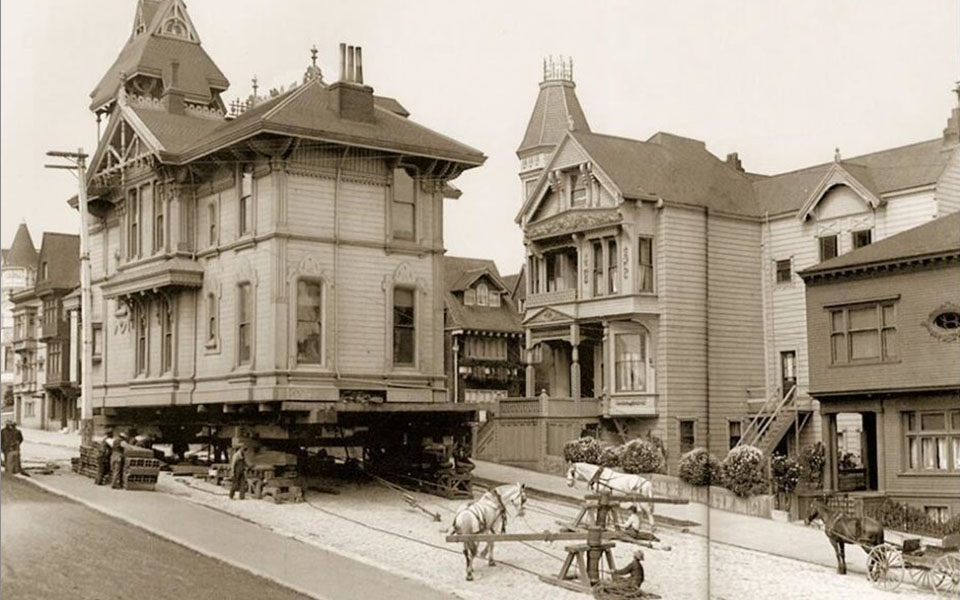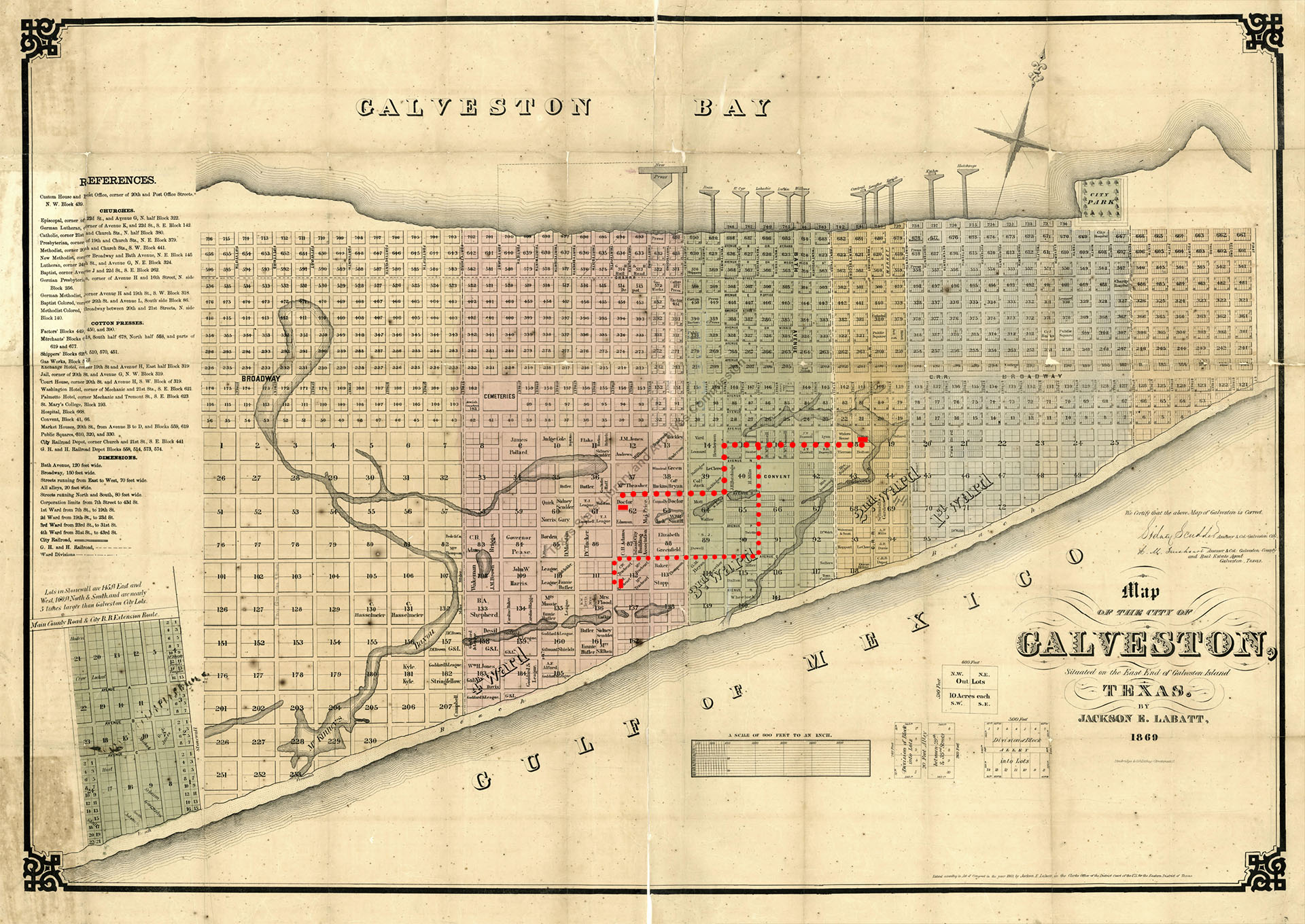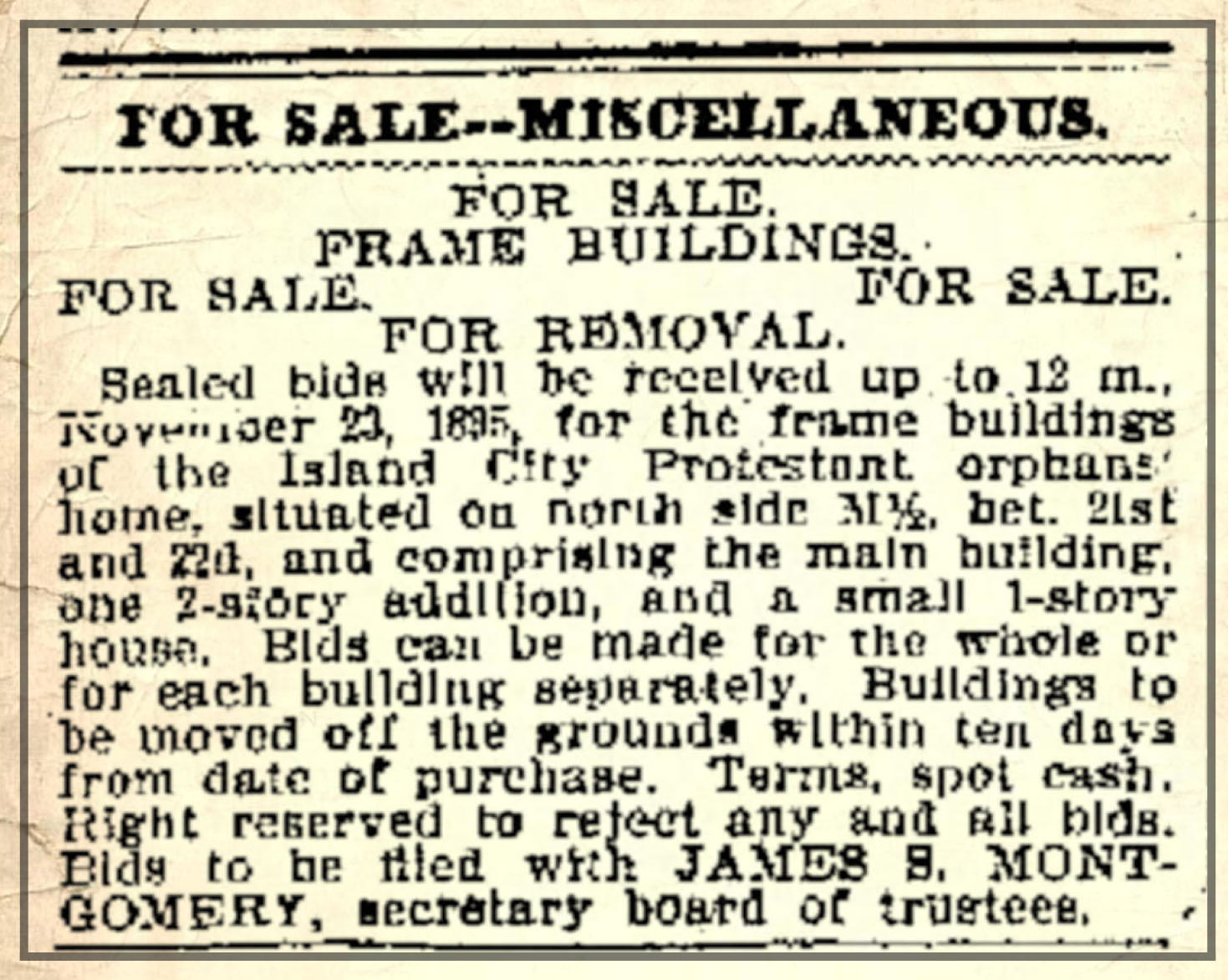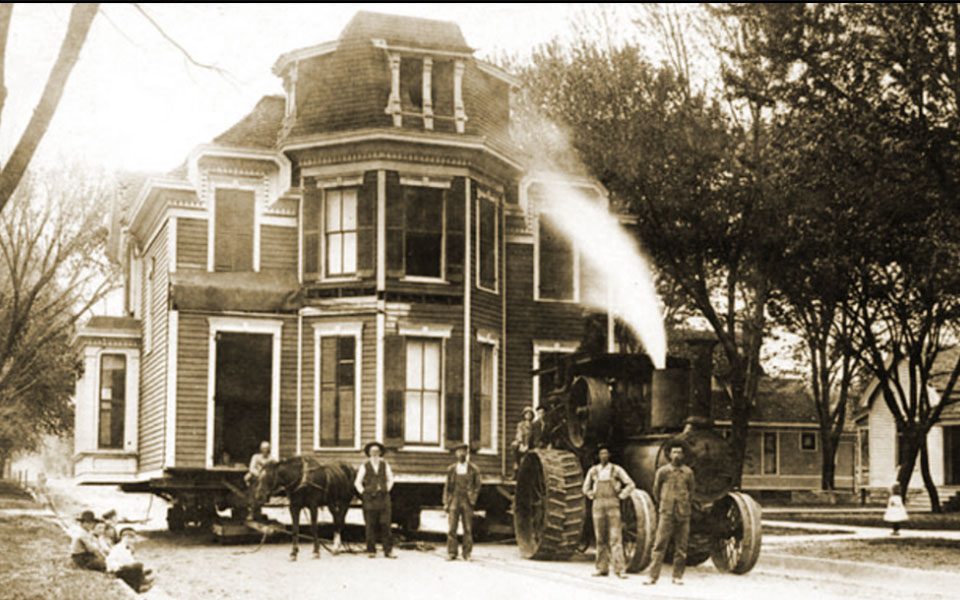How Could They Move a House in 1893?

Pictured above: Moving a house in San Francisco in 1908
While it may seem crazy to relocate an entire house today, it was more common than you may think. In our time, even with modern machinery, it is usually cheaper and easier to tear down a house (proper term is "raze"), haul off the debris, and start over anew. In our not-so-distant history, however, things were not so disposable.


